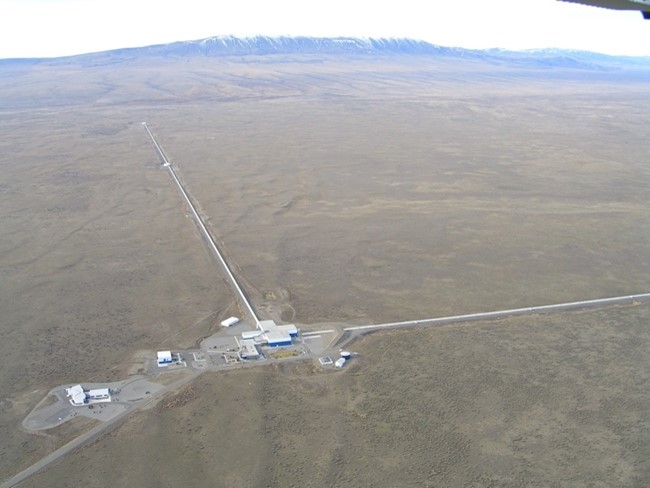Advanced LIGO
The National Science Foundation’s Advanced LIGO detectors are the world’s most sensitive gravitational-wave detectors. They have revolutionized astrophysics with their breakthrough discoveries in 2015 and 2017. After further improvement (LIGO A+) they are now observing several black hole mergers every week.
We are directly involved in designing upgrade hardware for Advanced LIGO, and we regularly have Syracuse University graduate students stationed at the LIGO observatories playing an active role in the detector improvement program. This work involves reducing the sources of noise in the detector that limit astrophysical sensitivity, as well as improving the stability of the detector. There are opportunities for both experimental and astrophysics graduate students to spend time at the LIGO Hanford and LIGO Livingston Observatories to get hands-on experience with the Advanced LIGO detectors.

LIGO A# Technology Development
LIGO A# (A-sharp) is a proposed upgrade to the Advanced LIGO detectors to further increase their sensitivity in 2029, after the O5-observation run. It is intended to bridge the observation gap until the third-generation observatories Cosmic Explorer and Einstein Telescope come online. At the same time LIGO A# can test key aspects of the Cosmic Explorer design.
LIGO A# includes new 100 kg test masses, higher stress test mass suspension fibers, an arm cavity power increase to 1.5MW, a squeezing efficiency increased to 10 dB at high frequencies, as well as better optical coatings, for example AlGaAs crystalline coatings.
The Syracuse University Center for Gravitational-wave Astronomy and Astrophysics is involved with many aspects of the A# design, including ways to improve the squeezing efficiency, the development and integration of coatings, sensors and actuators for test mass suspension and thermal control of the optics.

